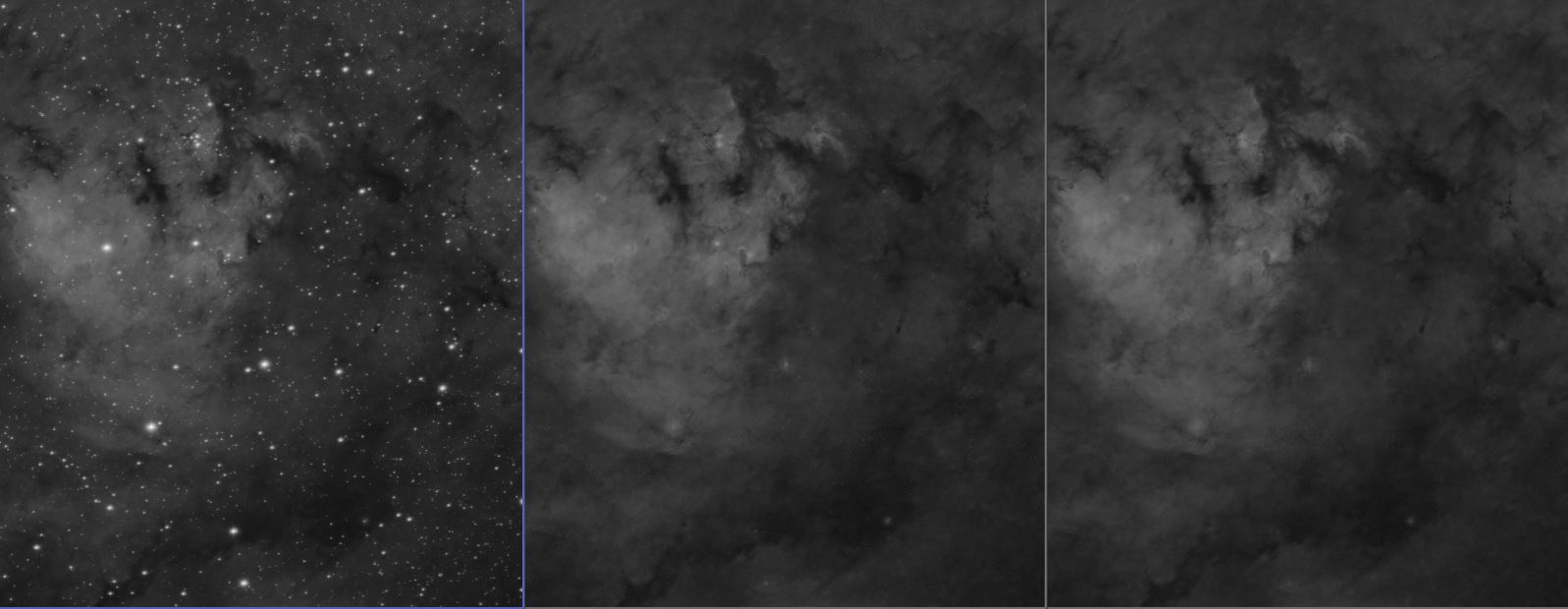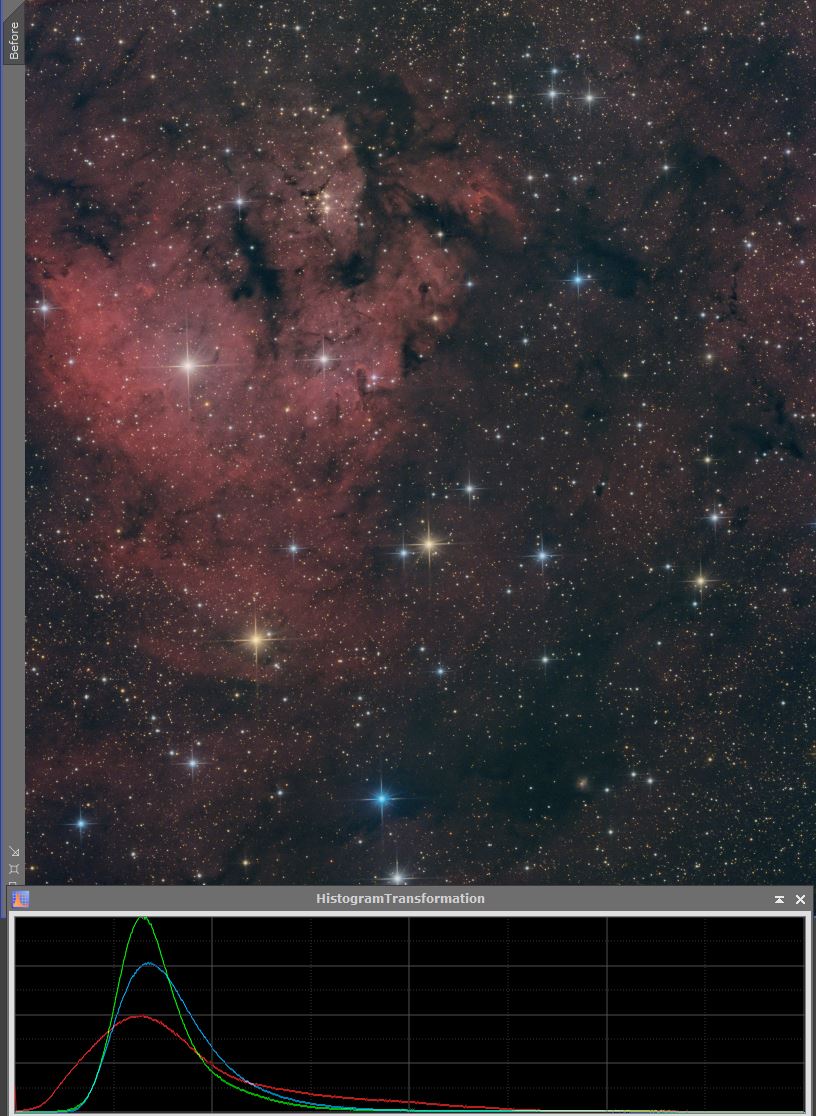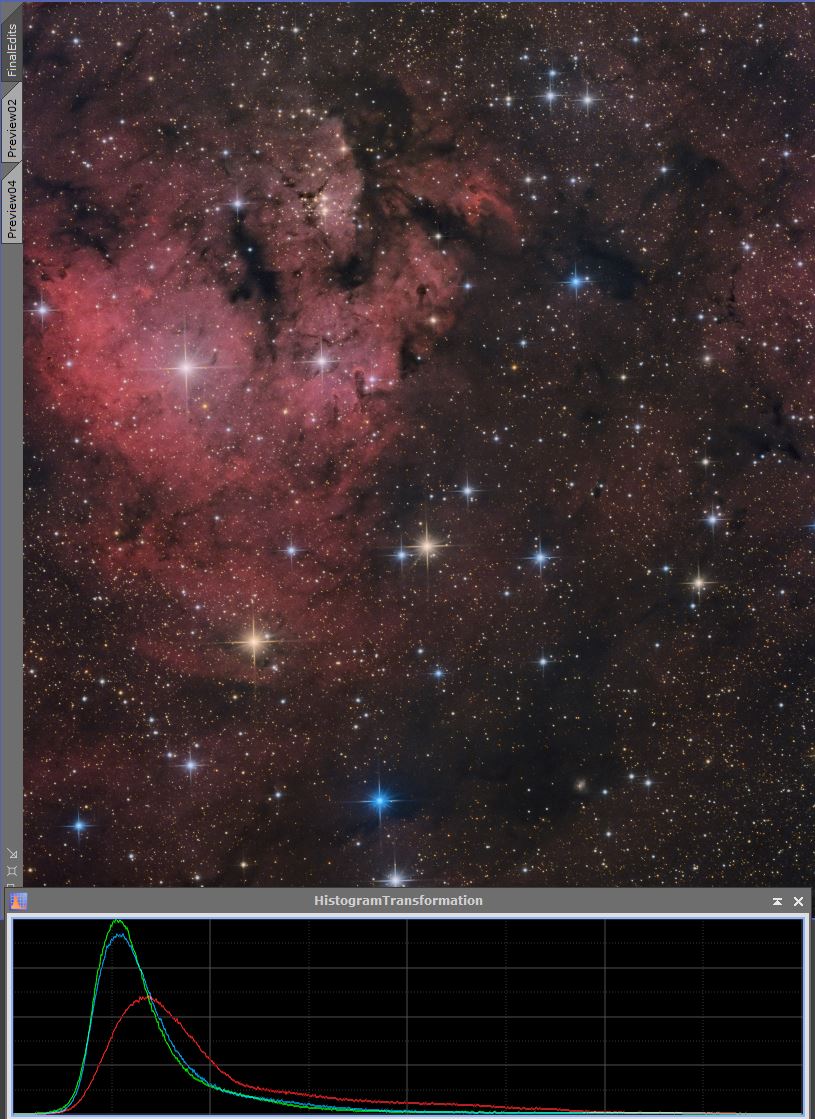
The constellation Cepheus is home to many exciting dark and emission nebula. In this direction of the fall night sky we find ourselves looking perpendicular into the spiraling arm of the Milky Way galaxy where our sun resides. This is a photo of a bright star forming region designated Ced-214 (also known as NGC 7822.) Here one can see all of the hydrogen gases in red amongst dense rivers of molecular clouds.
Amongst the large dark shell of dust, a small reflection nebula can be found in the lower right corner (designation GN 23.56.1)


Follow Me on Instagram | Astrobin | DarkFlats
Equipment:
OSC Data was acquired using a combination of 2m, 3m and 4min exposures:
Orion 8in F4.9 1000mm Newtonian Reflector / Flocked / Primary mirror replaced due to turned-down-edge
Sky-Watcher F4 Aplanatic Coma Corrector
Astronomik’s L3 UV/IR Luminance Filter
ASI071mc Pro cooled to -15C Gain 90 offset 65
Orion Atlas Pro
Guided with ZWO OAG+asi120mm
Narrowband Ha data Acquired November 12th and 13th 2019 using 10min exposures
Celestron CGEM Mount
Rokinon 135mm f2 Lens taken at F/2
Astrodon 5nm Ha
ASI183mm Pro cooled to -15C Gain 53 offset 10
Data Acquired using N.I.N.A Sequencer 2.0 Nightly and Guided with PHD2
Integration Time:
* OSC Panel 1: 5hr 35m
* OSC Panel 2: 6hr 33m
* OSC Total : 12hr 08m
* 135mm Ha Data: 7hr 10mProcessing each Color Panel
Inspected all subs for bad images with Blink, discarding subs containing clouds
Calibrated all subs with their corresponding master flat and master dark and then debayered
Used sub-frame selector to weight all images based on the following weighting
1 |
|
Selected the best sub from sub-frame selector and blink to use as a reference frame for aligning and integration
Integrated using Generalized ESD Pixel Rejection
Remove unwanted background gradients caused by light pollution using DBE
Background Neutralization using 3-4 background preview windows aggregated
Photometic Color Calibration
Even Working Space for all channels setting RGB Workingspace to 1,1,1
Noise Reduction using TGV
Restore Color of saturated stars with HSV Repaired Separation
Slight saturation of the Blue Channel
ArcSinh Stretch |> Masked Stretch |> Histogram Stretch
Processing Widefield Narrowband Data
The 135mm Narrowband Ha Widefield Image was Stacked using an equivalent pre-processing workflow as above and then:
Cropped of Stacking Edges
One round of DBE
No sharpening or noise reduction was applied
Stretched to Non-Linear using Histogram Transformation
Mosaic Creation
The individually processed panels were saved and then a distortion correction model was created using the Image Solver script
Mosaic by Coordinates was used to add both panels together to produce reprojected (aligned) versions of the panels
The aligned panels were then combined using Gradient Merge Mosaic
The resulting mosaic was then cropped of final stacking artifacts
A few attempts were made to produce a seamless mosaic here as stacking artifacts had not been previously removed before alignment. In general I recommend doing this ahead of time but in this case I opted to use the Clone Stamp tool on a black reference image to paint away the stacking artifacts where the panels are seamed together.

Ha+RGB Combination:
The widefield Ha data was used to boost both the synthetic luminance and red channel data using the following technique:
The previous Ha widefield image was star-aligned using a 50% resample copy of the OSC Mosaic as it’s reference, using Thin Plate Splines
Stars were removed from the resulting image using two rounds of Starnet++

The resulting starless image was then 200% resampled to match the mosaic resolution
A synthetic luminance and the red channel was extracted from the color mosaic using the Channel Extraction process
The Ha data was added to both the luminance and red channel using the following PixelMath formula:
$T+0.25*(Ha-med(Ha))

The resulting L and R channels were re-added to the mosaic using the LRGBCombination process (no chrominance NR applied)

Curves were applied to brighten the overall image

Dark Structure Enhance script was used to increase contrast in the dense molecular clouds

Local histogram equalization was applied to the brightest portion of the emission nebula.

Star Cores were cleaned of drizzling artifacts using chrominance noise reduction and a star mask

- The overall image was brightened further with histogram transformation and curves

- Chrominance noise in the background was reduced using MMT and LRGBCombination

The tail of the histogram was balanced using histogram transformation on each channel


- An ICC Profile was applied to enable Black Point Compensation
Constructive criticism is welcome. Let me know what you think! How can I improve?